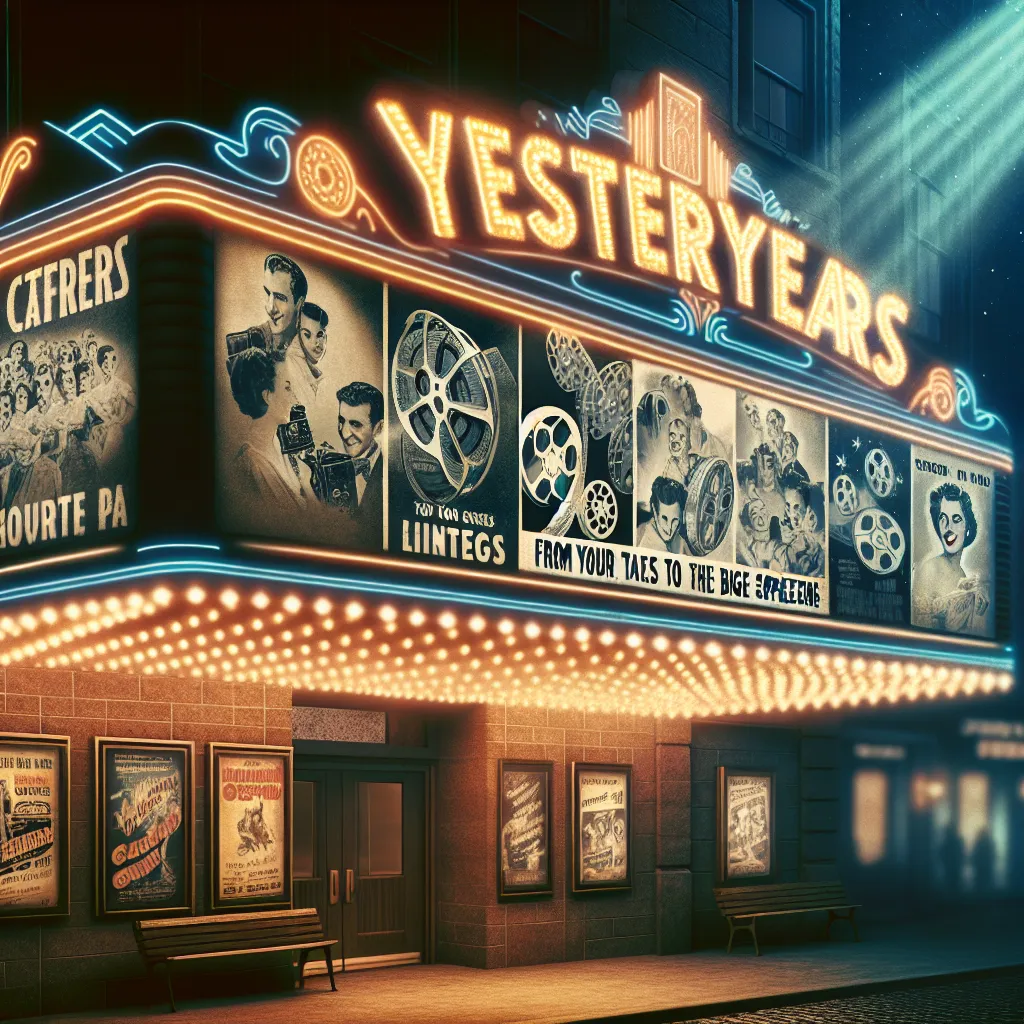The article delves into the birth of video games, exploring the early console and arcade gaming era. It highlights the pivotal role of the Magnavox Odyssey in initiating the gaming revolution and the booming popularity of arcade games like Space Invaders and Pac-Man. Despite their primitive graphics, these early games laid the groundwork for today's multibillion-dollar gaming industry, introducing concepts like competitive multiplayer and immersive gameplay experiences. The piece also discusses the transformation brought by the rise of 3D graphics, leading to visually stunning and immersive gaming experiences, and paving the way for virtual reality (VR) gaming. It promises an insightful journey through the evolution of gaming, from its humble beginnings to the modern era of realistic and captivating gaming experiences, making it a compelling read for gaming enthusiasts.
The article discusses the significant growth and impact of subscription-based streaming platforms on the entertainment industry, highlighting the convenience and flexibility they offer to consumers. It emphasizes the role of original content in driving the success of platforms like Netflix and the direct relationship with consumers as a business advantage. Additionally, it explores the transformative impact of streaming services on traditional media, including changing consumer behavior, competition for high-quality content, and the disruption of distribution channels. The article ultimately presents a compelling case for readers to delve deeper into the evolving dynamics between subscription-based streaming platforms and traditional media to gain a comprehensive understanding of their influence on the entertainment landscape.
The article presents a comprehensive overview of the evolution and advancements in virtual reality (VR) technology, from its early stages to the cutting-edge immersive experiences of today. It delves into the historical development of VR, highlighting key milestones and technological advancements that have shaped the modern VR landscape. The article also explores the current state of VR technology, focusing on key advancements such as display technologies, haptic feedback systems, and room-scale VR, which have significantly enhanced the immersive capabilities of VR systems. Furthermore, it discusses the future prospects of VR, including the integration of AI and machine learning, promising even greater levels of realism and personalization in virtual experiences. The engaging narrative and in-depth exploration of VR's evolution and technological advancements make it a compelling read for anyone interested in the transformative potential of virtual reality.
The article “Enhancing Learning with Virtual Reality Technology in the Classroom” discusses the transformative potential of virtual reality (VR) in education. By simulating realistic environments and offering hands-on experiences, VR has the capability to revolutionize student engagement and deepen understanding of educational material. The immersive and interactive nature of VR caters to different learning styles, providing inclusive learning experiences, and preparing students for a technologically advanced world. Similarly, the article “Virtual Reality: A Game Changer in Educational Training” underscores the impact of VR technology in practical learning activities, offering realistic simulations in fields such as medicine, engineering, and aviation. Furthermore, VR facilitates personalized learning experiences, enables global access to high-quality education, and has the potential to enhance student engagement and academic performance. These articles present compelling insights into the myriad benefits of leveraging VR technology in education, making a convincing case for its integration into educational practices across various disciplines.
The article delves into the historical significance of theatrical performances in shaping the entertainment industry, tracing its origins from ancient civilizations to the modern era. It emphasizes the pivotal role of theatrical performances as a platform for storytelling, artistic expression, and cultural communication. The evolution of theatrical performances across different cultures and regions, from ancient Greece and Rome to Shakespearean England and contemporary stage productions, is highlighted, showcasing their enduring appeal. Furthermore, it explains how the transition from silent films to talkies revolutionized the cinematic experience, expanding the possibilities for storytelling and significantly impacting the entertainment industry as a whole. The article paints a compelling picture of the transformative power of theatrical performances and the game-changing nature of the shift to talkies, enticing readers to explore the full content for a comprehensive understanding of these influential developments in entertainment history.
The gaming industry has evolved significantly since the introduction of Pong in 1972 by Atari, serving as a catalyst for the future of gaming. Pong's success demonstrated the potential of the video game market, leading to further innovation and technological advancement, shaping the industry for decades to come. Understanding the impact of Pong is crucial in appreciating the ongoing transformation of gaming technology and culture, from the simple two-dimensional games of the past to the immersive virtual reality experiences of today. As technology continues to advance, the line between consoles and PCs is blurring, but the inherent flexibility and power of PCs continue to position them as a dominant force in the ever-changing landscape of gaming. Additionally, the rise of virtual reality gaming has transformed the way players engage with games, offering an immersive experience that continues to push the boundaries of what is possible in the gaming world.
The article explores the evolution of virtual reality (VR) from its origins in science fiction to its current tangible impact across various industries. It discusses how VR has progressed from a conceptual idea to a revolutionary technology that offers immersive and interactive experiences in fields such as gaming, entertainment, healthcare, education, and more. The accessibility and adoption of VR devices have accelerated, presenting opportunities for businesses to create innovative experiences and applications. The article also highlights VR's transformative impact on industries, such as healthcare's advanced training simulations, immersive educational experiences, and enhanced entertainment and gaming. It concludes by emphasizing the paradigm shift that VR represents in how we engage with digital experiences and its potential to reshape various sectors.
The article "Understanding the Basics of Virtual Reality Technology" delves into the foundational principles of VR, emphasizing its immersive and interactive nature. It discusses the technology's ability to create a sense of presence through high-resolution displays, motion sensors, and spatial audio, facilitating a seamless integration of the virtual and physical worlds. Moreover, the article highlights the significance of advanced graphics rendering, 3D spatial mapping, and technological innovations such as haptic feedback systems in enhancing the user experience. The piece emphasizes the relevance of understanding these basics for grasping the potential of VR across diverse industries, underscoring its impact on the modern digital landscape. By delving into this article, readers will gain a comprehensive insight into the fundamental components and technological capabilities of VR, enabling them to appreciate its profound impact and potential for creating compelling and immersive experiences.
The article provides an insightful exploration of the evolution and future potential of virtual reality (VR) technology. It highlights the remarkable progress from bulky, expensive headsets to sleek, affordable devices and emphasizes the boundless possibilities of the future of VR, particularly in terms of enhanced immersion and the development of the metaverse. The article also outlines how advancements in hardware, software, and network infrastructure are set to revolutionize industries and create new opportunities for innovation and creativity, making VR an exciting field to watch. Additionally, it underscores the promising advancements in haptic feedback technology and refinements in VR hardware, making the technology more accessible and user-friendly. Overall, the article serves as a compelling invitation for readers to delve into the transformative potential of VR and its impact on various aspects of daily life.
The article explores the transformative impact of streaming platforms on the entertainment industry, emphasizing the profound shifts in consumer behavior, content production, and industry dynamics. It highlights how streaming services like Netflix, Amazon Prime Video, Hulu, and Disney+ have challenged traditional entertainment distribution, offering viewers unprecedented access to diverse content and empowering them to curate their entertainment experiences. Moreover, the article underlines how streaming platforms have sparked the proliferation of high-quality original content, fostering cultural exchange and inclusivity, while also forcing traditional media networks and cinema chains to adapt to the paradigm shift. Finally, it suggests that the disruptive influence of streaming platforms has reshaped the entertainment landscape, providing a compelling insight into the evolving future of the industry.










